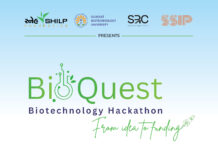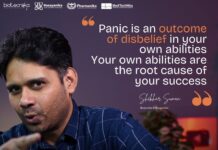Trump’s New Drug War: Indian Pharma Scrambles for Survival with AI & Cost Cuts!
Just when the global pharmaceutical sector thought it had seen it all, President Donald Trump’s latest punch at prescription drug prices blew everything. Boardrooms to R&D labs across the world are shocked by this bold move. His proposed 10% tariff on drug imports mirrors India’s own tax on American pharmaceuticals. Showing the world that it is not just a tit-for-tat measure. It’s a seismic shake-up for India’s $50 billion pharma industry, and it’s forcing the country’s generic giants to rethink everything from research to raw materials.
India, often dubbed the ‘Pharmacy of the World’ for supplying nearly 47% of the United States’ generic drugs, is now at the center of a pharmaceutical storm that’s as political as it is economic. And Indian pharma is not going down without a fight.
Instead of folding under pressure, the subcontinent’s drugmakers are pivoting hard. From cost-efficient offshore R&D to AI-driven innovation, industry insiders say this could be the beginning of a new era for Indian pharma. But at what cost?
Tariffs, Tech, and the Trump Card
Earlier this week, Trump shocked both supporters and critics by unveiling a new pharmaceutical policy designed to slash drug prices by 59% for American consumers. The bold move includes the elimination of third-party intermediaries and the implementation of Most Favored Nation (MFN) pricing meaning the U.S. will now pay what the lowest-paying developed nation pays for prescription drugs.
A day later, the bomb dropped a 10% import tariff on all pharmaceutical goods, with India directly in the line of fire.
Founder and CEO of Healthark, Purav Gandhi, highlights this as a move more than just economic brinkmanship. In an exclusive conversation, he called it a “strategic inflection point” for Indian pharma.
“This is an opportunity in disguise,” said Gandhi. “It will push Indian companies to rethink how they innovate. Moving R&D centers to India is already happening, but with tariffs like these, it’s going to become a necessity.”
From Patent Clones to Innovation Zones
For decades, Indian pharmaceutical companies thrived on generics, reverse-engineering blockbuster drugs, and selling them at a fraction of the price. But that era is hitting a wall. With profit margins already razor-thin, particularly for smaller exporters operating on sub-5% returns, the Trump tariff could be a death knell.
“This kind of tariff can easily erode 9–12% of EBITDA margins for companies like Aurobindo and Dr. Reddy’s,” said Aarthi Janakiraman, research director at Everest Group.
The answer? Smarter, faster, cheaper research.
AI is increasingly becoming a lifeline for a sector under siege. Drug discovery, previously a billion-dollar, decade-long journey, is being disrupted by algorithms that can sift through chemical libraries in weeks.
“AI isn’t optional anymore. It’s an inevitability,” said Gandhi. “Indian pharma has to scale its R&D efforts without inflating costs, and AI provides that leverage.”
Capacity Crunch: The Human Factor
But it’s not just about machines. With more R&D shifting to India, talent constraints are beginning to show. India produces a large pool of pharmacy and biotechnology graduates annually, but the demand for niche R&D roles in biologics, oncology, and rare diseases is outpacing supply.
As the industry digitizes, it isn’t just looking for chemists. It needs data scientists, bioinformaticians, AI modelers, and regulatory experts. Pharma campuses are becoming tech hubs, and hiring wars are heating up.
“There’s a real shortage of cross-disciplinary talent,” said Janakiraman. “This is where industry-academia partnerships must intensify. Upskilling is no longer a luxury. It’s survival.”
The Biocon and Sun Pharma Blueprint
Some players saw this coming. Sun Pharma, India’s largest drug manufacturer, has long focused on specialty drugs and injectables. With 6–8% of global revenues invested in R&D, it was among the first Indian firms to realize that the future lies in innovation, not imitation.
Biocon, meanwhile, bet big on biosimilars, the complex, near-identical versions of biologic drugs. But here’s the catch: these products take upwards of 7 years and $200 million to develop. In a world of sudden tariffs and global uncertainty, how many companies can afford to play the long game?
“Companies are being forced to make difficult choices,” said R&D advisor Rajat Singh. “Do you double down on high-risk biosimilars, or pivot to low-hanging fruit like nutraceuticals or over-the-counter drugs?”
Strategic Shifts: From the US to the World
Facing these challenges, Indian pharmaceutical firms are rapidly diversifying.
- Dr. Reddy’s is eyeing Africa and Eastern Europe.
- Cipla is strengthening its foothold in Southeast Asia.
- Lupin is expanding aggressively into Latin America.
These companies are also deepening partnerships with Western biotech firms. Co-development is the new buzzword.
Take Sanofi, for instance. Its collaborative projects with Cipla, Dr. Reddy’s, and Mankind Pharma aren’t just about joint marketing. They are about combining India’s manufacturing scale with America’s regulatory prowess.
“This synergy is the future,” Gandhi added. “You need India’s cost-efficiency with U.S. market access. It’s a symbiotic relationship.”
Government to the Rescue?
Even as private companies recalibrate, the Indian government isn’t sitting idle. The Production-Linked Incentive (PLI) scheme has become the cornerstone of India’s pharma revival. Designed to boost domestic API production and reduce dependence on China, the scheme also indirectly supports R&D by ensuring supply chain stability.
But more will be needed. Experts are calling for:
- Tax breaks on R&D investments
- Patent law reform
- Faster regulatory clearances for AI-based drug approvals
- Infrastructure grants for CRDMOs (Contract Research and Development Manufacturing Organisations)
“PLI is a start,” said Janakiraman, “but the government must think longer term. We need a National AI-Pharma Innovation Mission, not just subsidies.”
The API Angle and Supply Chain Shake-Up
Let’s not forget the Active Pharmaceutical Ingredient (API) dilemma. India imports more than 60% of its API needs from China, which makes it vulnerable to geopolitical disruptions.
Tariffs from the U.S. are a wake-up call to invest in R&D and de-risk supply chains entirely.
Companies like Zydus Cadila and Torrent Pharma are already investing in backward integration, building domestic API facilities, and sourcing local intermediates.
The AI Imperative
So, what exactly is AI doing in Indian pharma labs today?
- Drug discovery models that predict molecule efficacy before synthesis
- Simulation engines to test toxicity without animal trials.
- Digital twins of lab processes to optimize productivity.
- Natural language processing for scanning global patent databases.
- AI-powered clinical trial matching to fast-track patient recruitment.
The tools exist. What’s needed is scale and integration.
“We can’t afford to play catch-up anymore,” said Gandhi. “AI isn’t about cost-cutting; it’s about creating a new paradigm in pharma.”
Winners, Losers, and the Road Ahead
There’s no denying that smaller players are at greater risk. Firms that rely solely on U.S. exports without investing in IP, innovation, or partnerships may simply not survive the tariff tide.
On the other hand, mid-sized firms that adapt and invest in CRDMOs, AI, and global partnerships could emerge stronger and more resilient.
And for giants like Sun Pharma and Biocon, the message is clear: double down on innovation or risk irrelevance in a rapidly changing world.
In the end, Trump’s tariffs have forced an uncomfortable but necessary question: Can Indian pharma remain the world’s medicine chest without becoming the world’s innovation lab?
It seems that the answer is unfolding in real time across labs in Hyderabad, factories in Ahmedabad, and boardrooms in Mumbai.
AI, automation, and agile innovation define who thrives and who fades away. The U.S. may have fired the first shot, but the Indian pharma industry is readying a silent revolution, powered by algorithms, homegrown talent, and strategic resilience. Because when profit margins disappear, only innovation remains.























